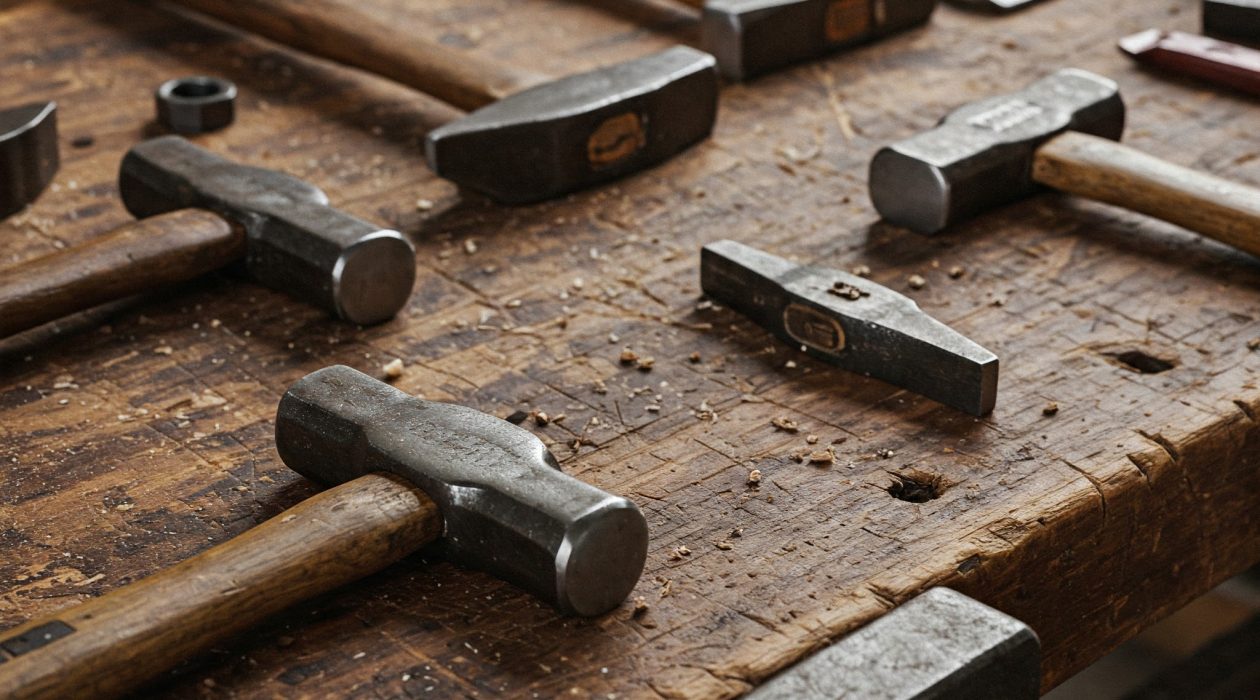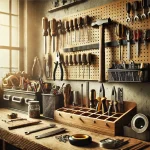When it comes to home renovation projects, few tools are as essential as a hammer. Whether you’re installing shelves, assembling furniture, or doing framing work, the right hammer can make all the difference in terms of efficiency, comfort, and the quality of your work. But with so many options available, how do you choose the best hammer for your specific needs?
In this guide, we’ll break down the key factors to consider when selecting the ideal hammer for your home renovation projects. From understanding the different types of hammers to choosing the right weight, handle, and material, we’ll provide you with all the information you need to pick the perfect hammer.
Understand the Different Types of Hammers
Not all hammers are created equal. Different hammers are designed for different tasks, so it’s important to choose one that aligns with the scope of your renovation projects. Here are some of the most common types of hammers you’ll come across:
Claw Hammer
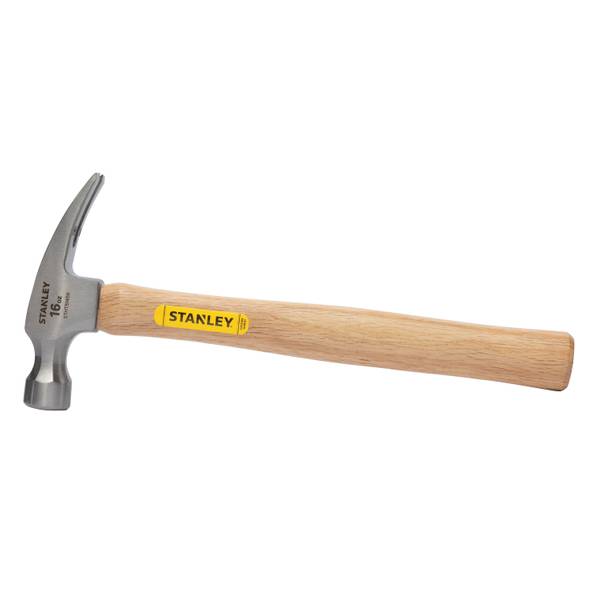
The classic claw hammer is the go-to tool for most DIYers and professionals. It features a flat face for driving nails and a curved, forked claw on the opposite side for removing nails. Claw hammers are versatile and ideal for a wide variety of tasks, including framing, finishing, and general carpentry work.
One great option is the Stanley 16oz. Rip Claw Hammer with Wood Handle. This hammer features a durable, ergonomic wooden handle that provides both comfort and control during use. Its rip claw design is especially useful for removing nails or prying apart materials, making it a fantastic tool for demolition or repair tasks.
Best for: General-purpose use, driving and removing nails.
Pro Tip: Look for a hammer with a comfortable, ergonomic grip to reduce hand fatigue during extended use. The Stanley 16oz. Rip Claw Hammer is designed with just that in mind, providing a reliable and comfortable option for your renovation projects.
Sledgehammer
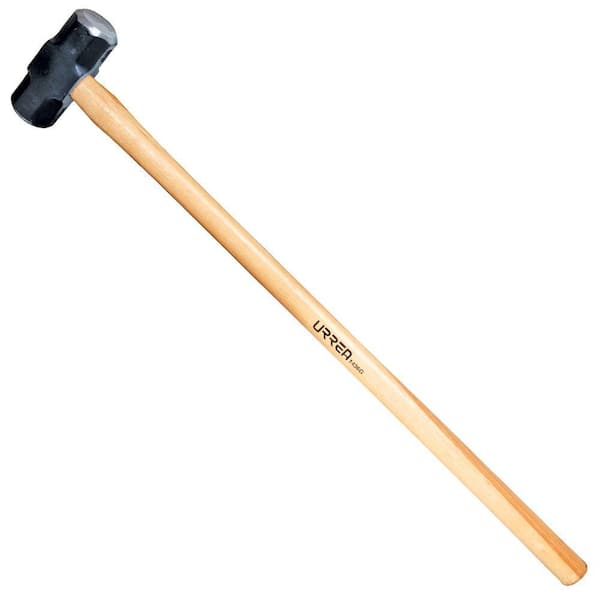
For heavy-duty tasks such as breaking concrete, demolition work, or driving stakes, the sledgehammer is your tool of choice. It has a larger, heavier head compared to a standard hammer, making it ideal for tasks that require more force.
Best for: Demolition, breaking up concrete, driving heavy-duty nails.
Ball Peen Hammer

A ball peen hammer features a flat face and a rounded, domed end (the peen) that’s perfect for shaping metal, peening rivets, or working on intricate metalworking tasks. Though not as commonly used in home renovation, it’s essential for specific projects like automobile repair or metalworking.
Best for: Metalworking, shaping, and peening rivets.
Rubber Mallet
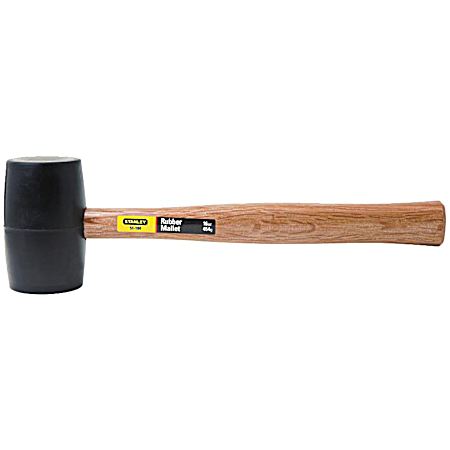
When you need to drive materials without damaging delicate surfaces, a rubber mallet is an excellent choice. With its soft, cushioned head, it’s perfect for tasks like assembling furniture, installing tiles, or tapping wooden pieces into place without leaving dents.
Best for: Working with delicate materials like wood or tiles, assembling furniture.
One great option for a rubber mallet is the Stanley 16 Oz. Rubber Mallet. This mallet features a sturdy, durable rubber head that delivers a strong impact while minimizing the risk of damaging your workpieces. Its lightweight design makes it easy to handle and control, reducing hand fatigue during extended use. The ergonomic handle provides a comfortable grip, allowing for greater precision when tapping parts into place.
Pro Tip: Use the Stanley 16 Oz. Rubber Mallet for tasks like driving dowels into holes or securing components without marring the surface. Its soft head is also gentle enough for use on tile or soft metals, ensuring your project maintains a professional finish.
Framing Hammer

Framing hammers are heavier than standard claw hammers and have a slightly longer handle. They often feature a milled face to reduce slippage and provide more driving force. These hammers are designed for heavy-duty work, particularly when framing homes or large structures.
Best for: Heavy framing, driving large nails, construction projects.
Consider the Weight of the Hammer
The weight of the hammer plays a big role in how comfortable it is to use, as well as how much force you can apply. Typically, hammers range from 8 to 20 ounces, though some specialty hammers can weigh more.
Lightweight Hammers (8-12 ounces)
These hammers are ideal for light tasks, such as driving small nails, assembling furniture, or working on detailed projects. A lightweight hammer reduces fatigue and gives you better control for precision tasks.
Best for: Small, precise tasks like finishing work, furniture assembly, or installing trim.
Medium-Weight Hammers (16 ounces)
The most commonly used hammer weight is around 16 ounces. This size strikes a good balance between power and control, making it suitable for general home renovation work, such as framing, building shelves, and repairing drywall.
Best for: General-purpose home renovation tasks, driving nails, small framing projects.
Heavyweight Hammers (20 ounces or more)
Heavier hammers, such as 20-ounce or larger framing hammers, are great for tough projects that require more force, like building decks or driving larger nails. These are typically used by professionals for heavy construction, but a DIYer with large projects may also benefit from their additional power.
Best for: Heavy-duty construction, framing, driving large nails, demolition.
Choose the Right Handle Material
The handle of your hammer is just as important as its head. A comfortable, durable handle reduces vibration, increases control, and makes the tool safer to use. There are three primary materials for hammer handles:
Wood Handles
Traditional wood handles are made from materials like hickory, ash, or oak. They’re lightweight, shock-absorbing, and provide a classic feel. However, wood can wear out over time and may break under extreme pressure.
Best for: Those who prefer a traditional, natural feel and don’t mind occasional maintenance.
Fiberglass Handles
Fiberglass handles are a modern alternative to wood. They’re lightweight, durable, and often come with a rubber grip for comfort. They also absorb shock well, which helps reduce vibration. Fiberglass handles are less likely to break compared to wood and are generally more resistant to wear and tear.
Best for: Durability, shock absorption, and modern designs.
Steel Handles
Steel handles are the most durable and resistant to breakage. They’re often found in sledgehammers or other heavy-duty tools that require a high level of durability. However, they can be heavier than wood or fiberglass and may transmit more vibration to your hand.
Best for: Heavy-duty tasks and projects requiring maximum durability.
Pay Attention to the Hammer’s Grip
Comfort is key when choosing a hammer. Look for a model with a well-designed grip to reduce hand fatigue, especially if you’re going to be using it for extended periods of time. Many hammers feature textured or rubberized grips for better control and comfort. Ergonomic grips can also reduce the risk of blisters and strain.
Pro Tip: Consider hammers with a vibration-dampening handle, which helps reduce fatigue during long hours of work.
Decide Between Claw vs. Framing Hammer
If you’re working on smaller, detail-oriented tasks like hanging pictures or installing trim, a claw hammer is likely the best choice. However, if you’re taking on larger framing tasks like building a deck, a framing hammer will be more efficient.
Framing hammers are heavier, often feature a longer handle for extra leverage, and have a milled face that helps grip nails more securely. For most home renovation projects, a 16-ounce claw hammer is a solid choice, but heavier-duty tasks may benefit from the additional weight and power of a framing hammer.
Look for a Hammer with a Milled Face
The face of a hammer can come in two different textures: smooth or milled.
- Smooth Face: The smooth face of a hammer is perfect for finishing tasks where you want to avoid leaving marks or dents on your work surface. It’s ideal for framing or small repairs where precision is key.
- Milled Face: The milled face, or waffle face, has small indentations that grip the nail head better, reducing the chance of the hammer slipping off the nail. Milled faces are commonly found on framing hammers and are excellent for driving large nails with precision.
Test for Balance and Comfort
The balance of a hammer affects its accuracy and ease of use. Hold the hammer by the handle and swing it to ensure it feels well-balanced. You should be able to control the swing and strike with the proper force without struggling.
A hammer that feels comfortable in your hand will reduce fatigue and allow you to work longer without discomfort.
Selecting the Right Hammer for Your Home Renovation Projects
Choosing the best hammer for your home renovation projects depends on the tasks at hand. For most DIYers, a medium-weight, 16-ounce claw hammer with a rubberized grip and a smooth face is the go-to choice for general projects. However, heavier-duty tasks like framing or demolition will benefit from a framing hammer or sledgehammer.
Ultimately, it’s essential to understand the different hammer types, choose one with the right weight and handle material, and ensure it feels comfortable in your hand. By considering these factors, you’ll be equipped with the perfect hammer to tackle any renovation project you take on.
So, whether you’re building, remodeling, or repairing, the right hammer can make a world of difference in the success and enjoyment of your home renovation experience. Happy hammering!
Last modified: February 3, 2025